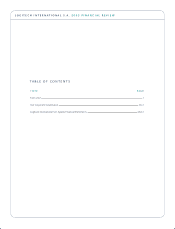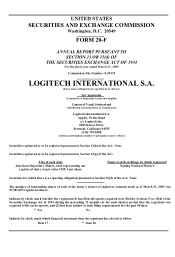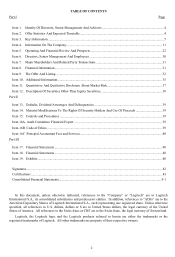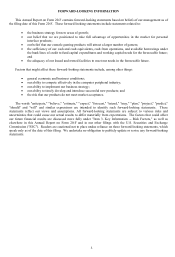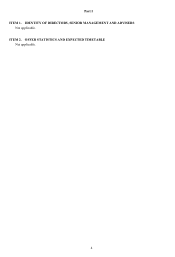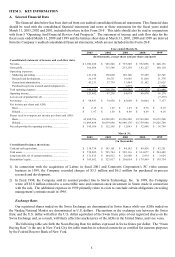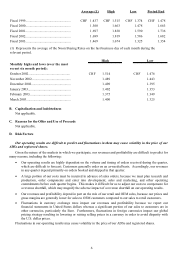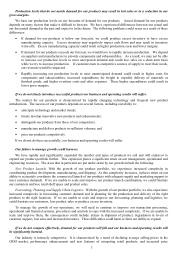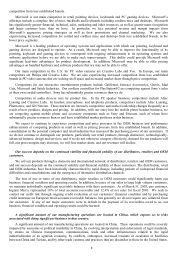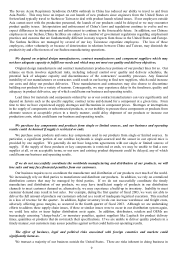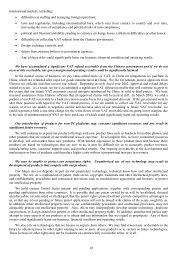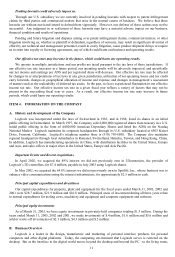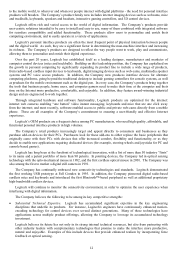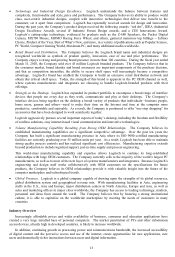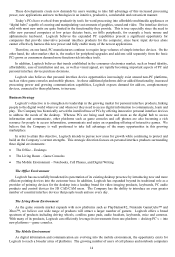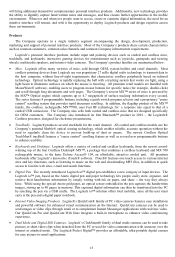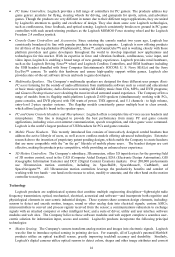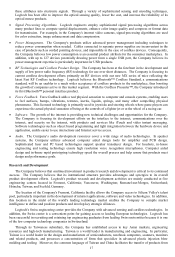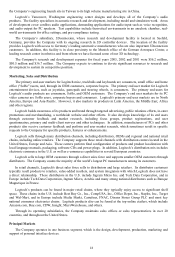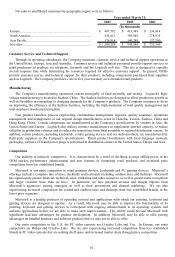Logitech 2003 Annual Report Download - page 23
Download and view the complete annual report
Please find page 23 of the 2003 Logitech annual report below. You can navigate through the pages in the report by either clicking on the pages listed below, or by using the keyword search tool below to find specific information within the annual report. 10
international markets, including:
• difficulties in staffing and managing foreign operations;
• laws and regulations, including environmental laws, which vary from country to country and over time,
increasing the costs of compliance and potential risks of non-compliance;
• political and financial instability, leading to currency exchange losses, collection difficulties or other losses;
• difficulties in collecting VAT refunds from the Chinese government;
• foreign exchange controls; and
• delays from customs brokers or government agencies.
Any of these risks could significantly harm our business, financial condition and operating results.
We have accumulated a significant VAT refund receivable from the Chinese government and if we do not
recover this receivable, our gross margin and operating results could be significantly harmed.
In the normal course of business, we pay value-added taxes, or VAT, in China on components we purchase in
China, which are refunded after export of goods manufactured in China. We file for refunds, receive approvals from
Chinese tax officials and then receive our refund. Beginning in early fiscal year 2002, approval and refund delays
started to occur. As a result, we have accumulated a significant VAT refund receivable that will continue to grow to
the extent that our future VAT payments exceed amounts reimbursed by China or sold to third parties. We have
received assurances from Chinese officials that all approved claims will be paid in full. In March 2003, we sold a
portion of our VAT receivable to a bank on a non-recourse basis for a negotiated discount. If the government were to
alter their position with regard to the VAT refund process, if we are unable to collect our VAT receivable for any
reason, or if we are unable to negotiate similar non-recourse sales of our remaining or future VAT receivable, we
could experience both a one-time charge for the write-down of our VAT receivable and on-going lower margins due
to the lack of reimbursement of VAT we have paid, any of which could significantly harm our operating results.
Our introduction of products for non-PC platforms may consume significant resources and not result in
significant future revenues.
We will continue to expand our product offerings with new product lines such as headsets for mobile phones, and
other products that are outside of our traditional area of expertise. To accomplish this, we have committed resources
to develop, sell and market these new products. With limited experience in these product lines and because these
products are based on technologies that are new to us, it may be difficult for us to accurately predict revenues,
manufacturing costs, customer support costs and product returns. Our ongoing investments in the development and
marketing new lines of products could produce higher costs without a proportional increase in revenues.
We may be unable to protect our proprietary rights. Unauthorized use of our technology may result in
development of products that compete with our products.
Our future success depends in part on our proprietary technology, technical know-how and other intellectual
property. We rely on a combination of patent, trade secret, copyright, trademark and other intellectual property laws,
and confidentiality procedures and contractual provisions such as nondisclosure agreements and licenses, to protect
our intellectual property.
We hold various United States patents and pending applications, together with corresponding patents and
pending applications from other countries. It is possible that any patent owned by us will be invalidated, deemed
unenforceable, circumvented or challenged, that the patent rights granted will not provide competitive advantages to
us, or that any of our pending or future patent applications will not be issued with claims of the scope sought by us.
In addition, other intellectual property laws or our confidentiality procedures and contractual provisions, may not
adequately protect our intellectual property. Also, others may independently develop similar technology, duplicate
our products, or design around our patents or other intellectual property rights. In addition, unauthorized parties may
attempt to copy aspects of our products or to obtain and use information that we regard as proprietary. Any of these
events could significantly harm our business, financial condition and operating results.
We also rely on technologies that we license or acquire from others. We may find it necessary or desirable in the
future to obtain licenses or other rights relating to one or more of our products or to current or future technologies.
These licenses or other rights may not be available on commercially reasonable terms, or at all.


